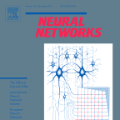
Industrial X-ray analysis is common in aerospace, automotive or nuclear industries where structural integrity of some parts needs to be guaranteed. However, the interpretation of radiographic images is sometimes difficult and may lead to two experts disagree on defect classification. The Automated Defect Recognition (ADR) system presented herein will reduce the analysis time and will also help reducing the subjective interpretation of the defects while increasing the reliability of the human inspector. Our Convolutional Neural Network (CNN) model achieves 94.2\% accuracy (mAP@IoU=50\%), which is considered as similar to expected human performance, when applied to an automotive aluminium castings dataset (GDXray), exceeding current state of the art for this dataset. On an industrial environment, its inference time is less than 400 ms per DICOM image, so it can be installed on production facilities with no impact on delivery time. In addition, an ablation study of the main hyper-parameters to optimise model accuracy from the initial baseline result of 75\% mAP up to 94.2\% mAP, was also conducted.
翻译:在航空航天、汽车或核工业中,工业X射线分析很常见,需要保证某些部件的结构完整性,然而,对放射图象的解释有时很困难,可能导致两位专家在缺陷分类上意见不一,此处介绍的自动分解识别系统将减少分析时间,也有助于减少对缺陷的主观解释,同时提高人体检查员的可靠性。我们的进化神经网络模型达到了94.2%的精确度(mAP@IOU=50 ⁇ ),在应用汽车铝铸造数据集(GDXray)时,该模型被认为与预期的人类性能相似,超过该数据集目前艺术状态。在工业环境中,其推论时间低于每张DICOM图像400毫秒,因此可以安装在对交付时间没有影响的生产设施上。此外,还进行了一项对主要超参数的精确度的研究,以优化模型的精确度,从75 ⁇ MAP至94.2% MAAP的初始基线结果的精确度。



